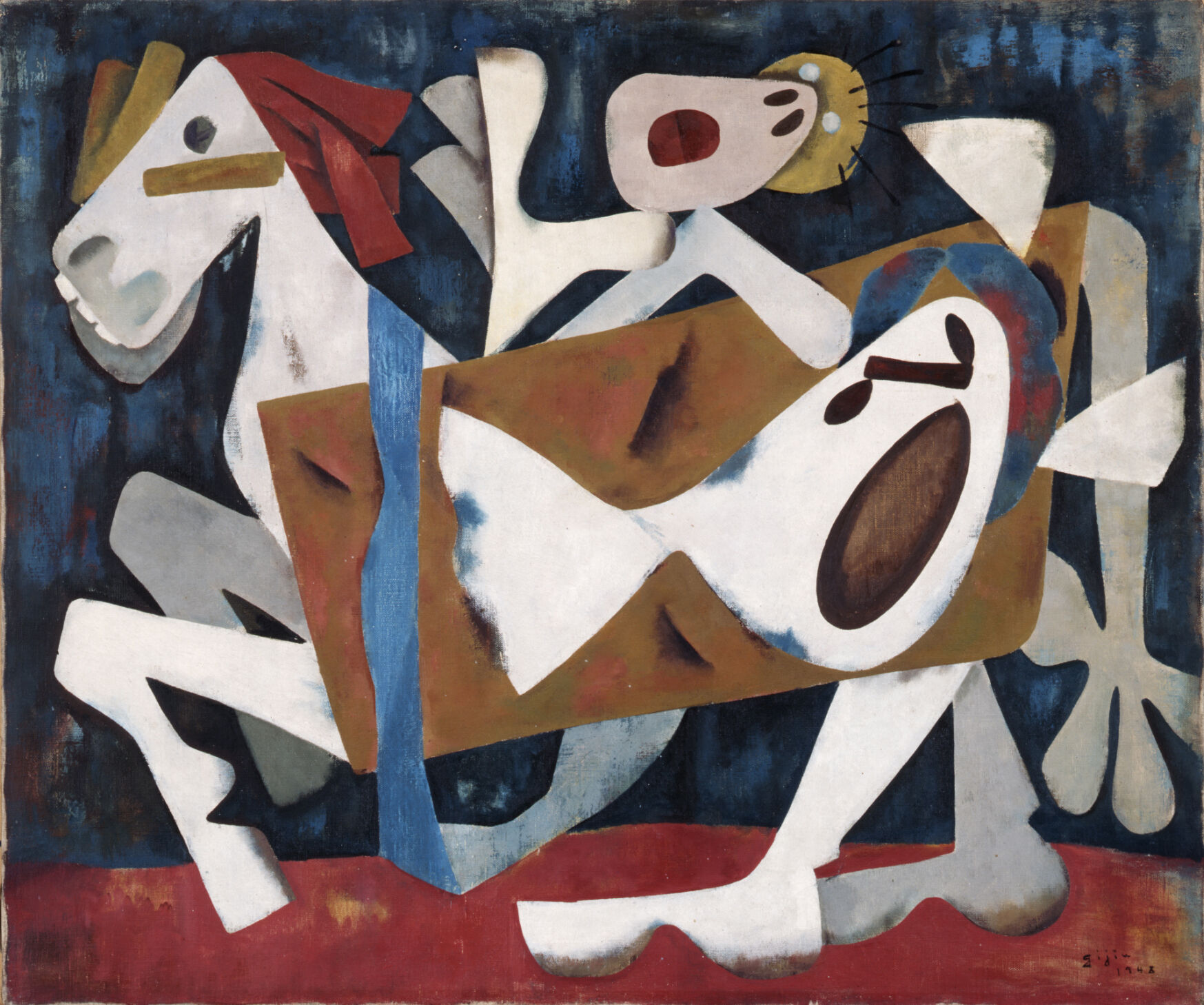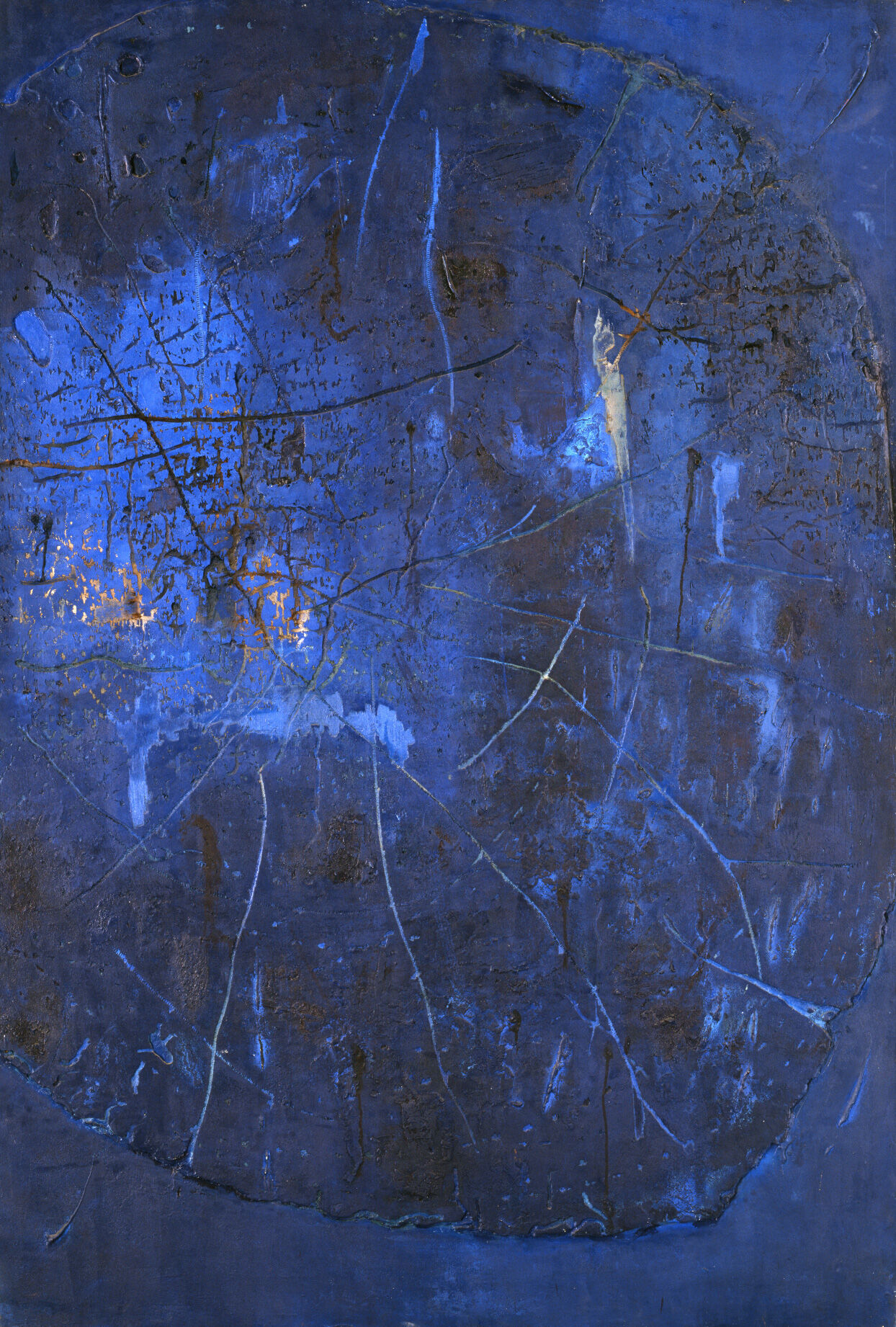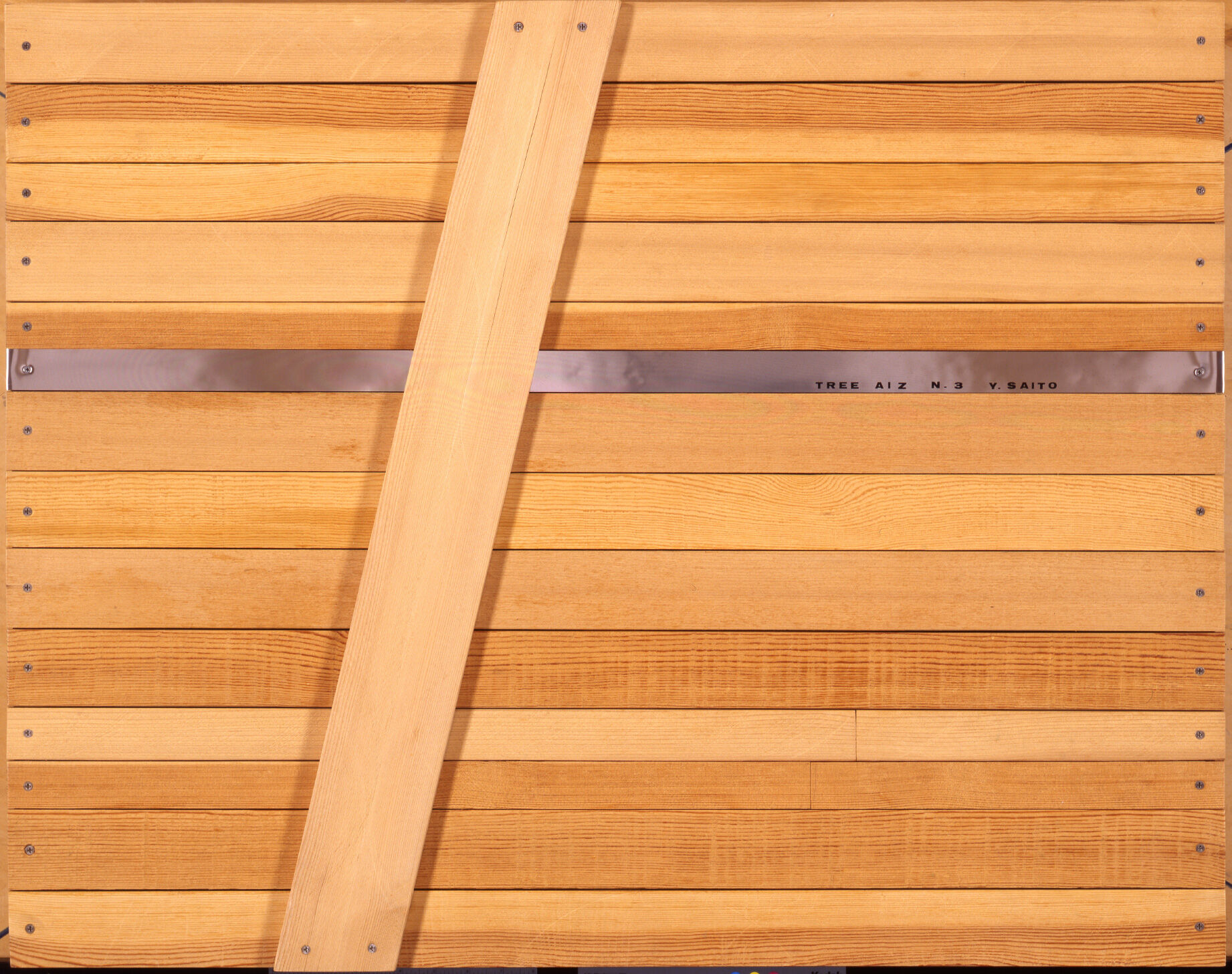SAITO Yoshishige [1904-2001]
SAITO Yoshishige was born in 1904 in Hirosaki City, Aomori Prefecture. During his childhood, his family moved to Tochigi and Tokyo accompanying his father’s military service. He became interested in art and literature while studying at the private Nihon Junior High School in 1917. Inspired by Russian Futurist art, he joined the prewar avant-garde movement with artists such as Tomoyoshi Murayama and Masamu Yanase. After focusing on literature in the 1920s, influenced by constructivism and Dadaism, he returned to art in the 1930s and created pragmatic works composed of ellipses and rectangles. In 1931, he decided to present a relief work at the eighteenth annual exhibition of the Nika Association. However, unsure whether it should be classified as a painting or sculpture, he ended up bringing the work back home. This episode can be said to epitomize the genre-defying characteristics of Saito’s work. His “Departure” and “Abstract” were accepted for the twenty-third Nika Exhibition in 1936. In 1945, nearly all of his works, novels, and notebooks were destroyed by an air raid. Reduced to extreme poverty, he spent some time recuperating in Urayasu in Chiba Prefecture. Later, his work “Oni” won the “K” award at the Fourth International Art Exhibition, Japan (Tokyo Biennale), in 1957. He also won the New Artist’s award at the 1957 “New Artists of Today” exhibition together with ONO Tadahiro and went on to present a series of prize-winning works at international exhibitions, including the 1960 Venice Biennale. His works from this period produced with an electric drill reflect his acceptance of the contemporary trend toward abstract expression, as well as his transcendence of it through concrete action. He continued in this style with works giving shape to movement through simple colors and forms. After moving to Yokohama in 1963, he was appointed as a professor at Tama Art University in the following year. There, he taught SEKINE Nobuo, SUGA Kishio, and other artists who would later become members of the “Mono-ha” (School of Things) movement. From the 1970s to the 1980s, Saito worked on wooden reliefs, his cubic “Antisymmetric” series, and his large-scale “Complex” series, in which he assembled wooden planks into entire spaces. These modes of expression, combining simple colors, shapes, and materials with two-dimensional and three-dimensional forms freely intersecting, reflect his aspiration to produce works that function as dynamical systems, emphasizing experiences between thought and matter. They continue to wield a tremendous impact even on the current art scene, where spatial installations have become the mainstream.
Saito died in 2001 in Yokohama.

《Ahondarame》
1948
oil on canvas
60.5×72.7cm

《Composition of blue》
1961
oil on plywood
181.5×121.0cm

《Treeaiz No.3》
1976
wood, stainless
72.0×91.0×7.2cm

